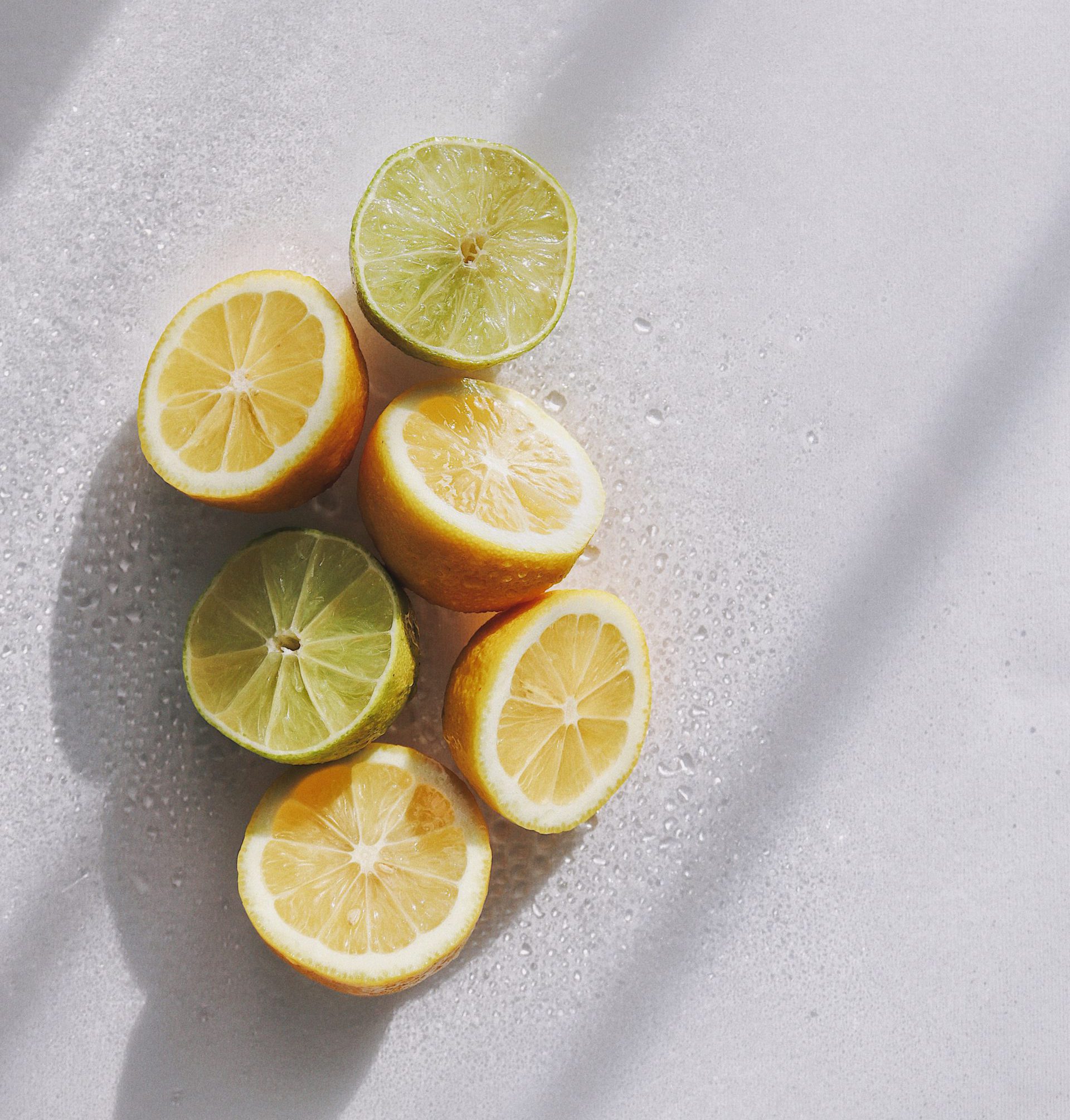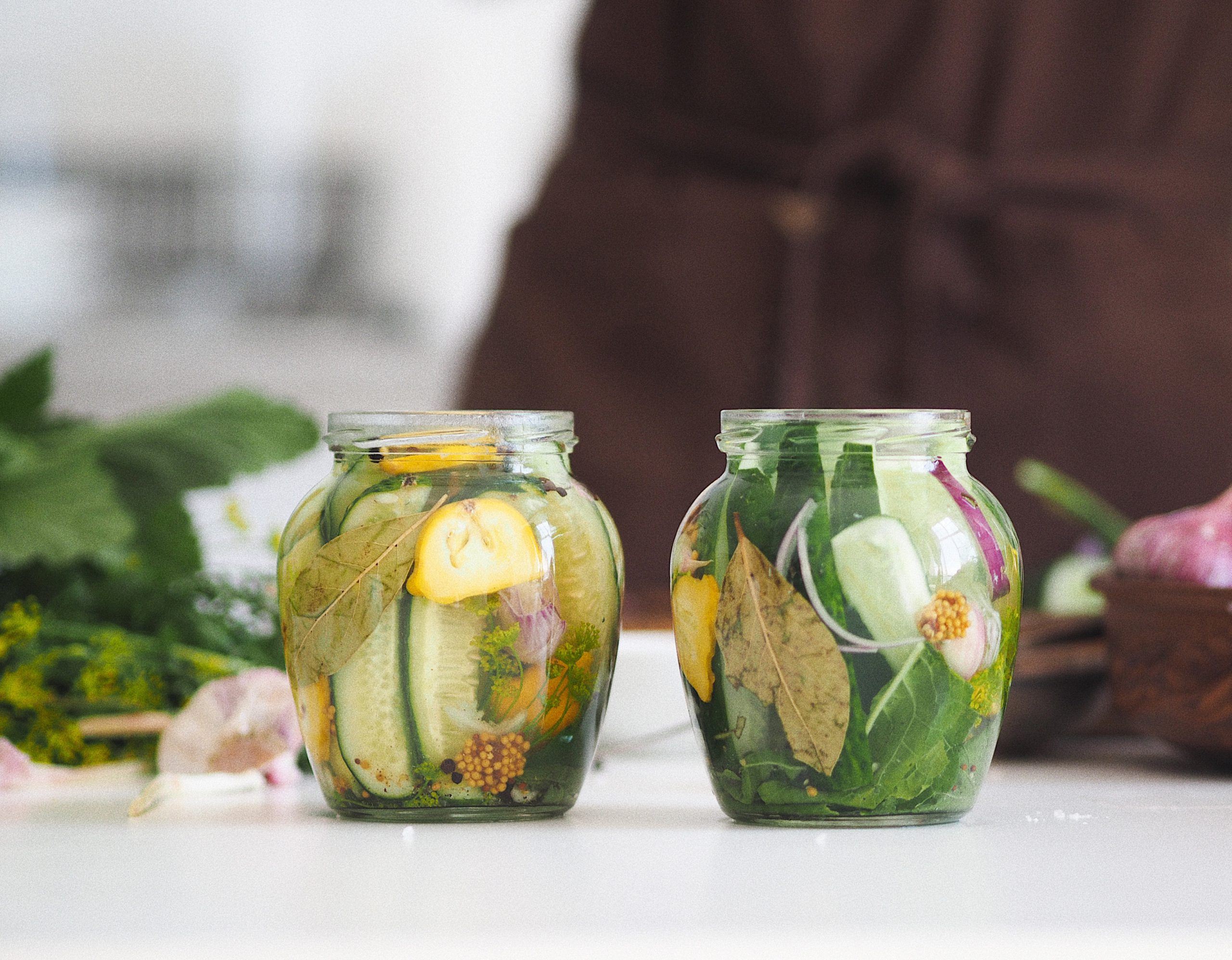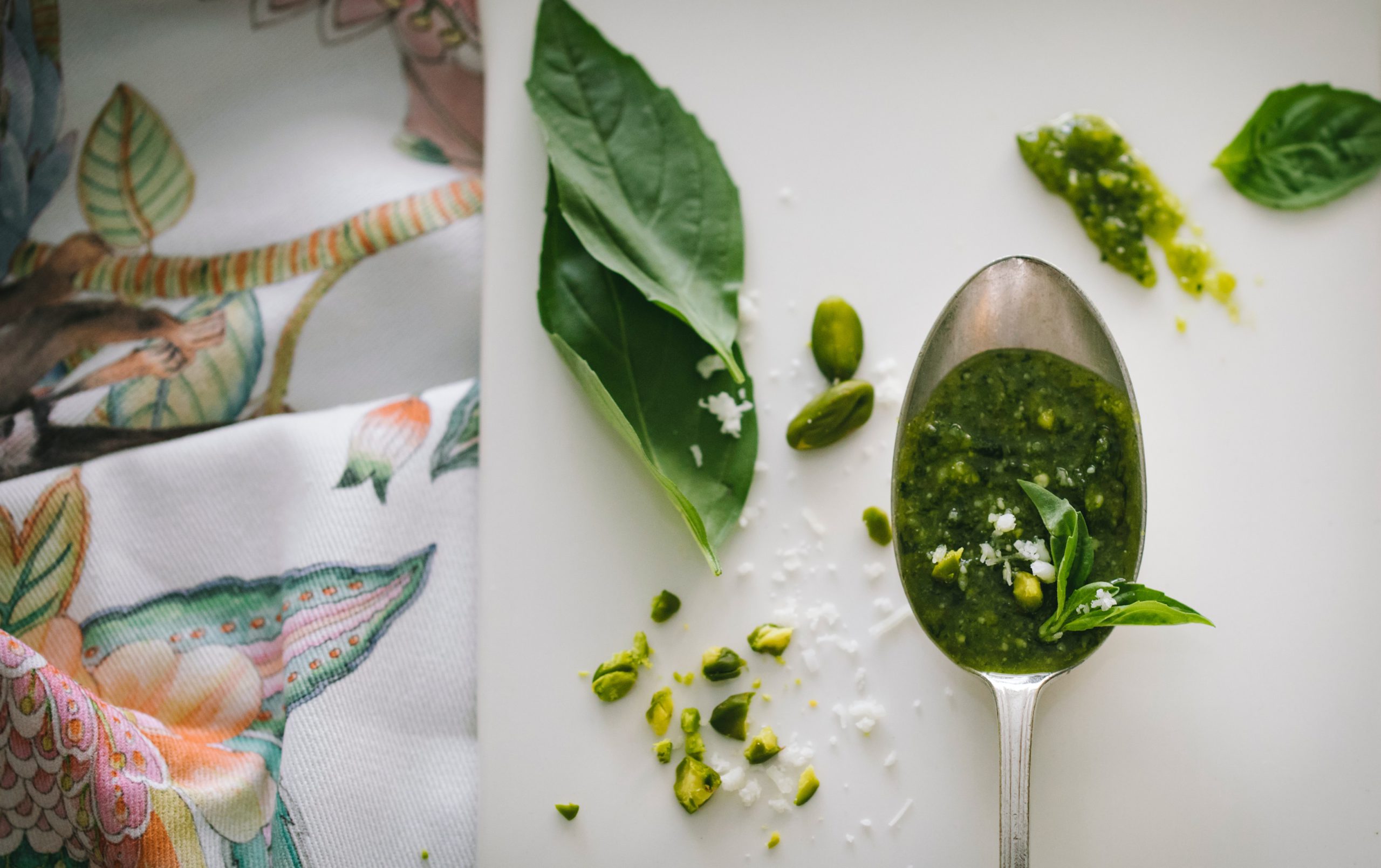Do you ever finish preparing a meal and wonder what to do with all your leftover scraps? We’ve compiled a list of 10 ways to use food scraps to create delicious and sustainable recipes.
1. Fruit Vinegar
Start by collecting fruit scraps. Bruised fruit, cores, skins and berry tops can all be saved to make a tasty fruit vinegar. Put these scraps in a non-metallic vessel and pour water over the scraps, leaving some room for air at the top of the container. To start off the fermentation process, add about a tablespoon of sugar per litre of liquid. Cover this with cheesecloth or muslin cloth to let it breathe and place it out of direct sunlight.
Over the first few days, stir at least every day to encourage fermentation. After 2 weeks, strain the solid fruits from the liquid, and compost the remaining scraps. After straining, let the liquid continue fermenting for at least another 2 weeks, or until your desired acidity.
Store this finished vinegar in a closed container to avoid continued fermentation. You can try making this vinegar with one type of fruit or a mixture. It can be used for vinaigrettes, marinades, sauces, and even in drinks.
2. Apple Juice
To make a tasty homemade apple juice, start by placing apple cores into a pot with water. Bring this to a boil and then let it simmer for 30 minutes. If you’d like, add honey or sugar to the juice. After letting it simmer, strain out the apple cores, and you will have a sweet homemade apple juice.
3. Candied Citrus Peels
Candied citrus peels are a fun dessert option that can be made with orange, lemon, grapefruit or any other citrus fruit. Take your peels and begin by removing any access membrane left on the inside of the peel. Place the peels in a saucepan, add water, bring it to a boil and then drain the water.
You will want to repeat this process two times. Then, refill the pan with equal parts water and sugar (about 2 cups of each) and let it boil. From here, add your citrus to the pan. Let the sugar, water, and citrus combination boil, and then put it on simmer for about an hour. After an hour, drain out the water, and coat the citrus in sugar. This treat can be baked into cookies or cakes, used as decorations on drinks or eaten as is.

4. Vegetable Stock
To make a tasty veggie stock, save the peeling, leaves and stalks of your vegetables. As you collect your vegetable scraps, keep them in the freezer, until you have collected at least a gallon of veggies. When you have all your veggies, put them into a pot and cover them with water. Bring this to a boil, and then leave it to simmer for at least 30 minutes.
You can add things like herbs, garlic or ginger for extra flavour. After your stock has simmered, strain the liquid from the veggies, and compost the vegetable scraps. This vegetable stock can be put in the freezer and used in soups, pasta, casseroles and dressings. Check out Little Broken for advice on which veggies to use, and which to avoid for your stock.
5. Stalks for Soup
Another great way to use the stalks of vegetables is for soups. Broccoli, cauliflower, and kale stalks all work great for this. Start by preserving these scraps in your freezer. When you have what you need, these stalks can be sauteed or roasted and blended to create a ton of yummy soups. Check out The Practical Kitchen, The Thirlby and La Boite for some great recipe ideas.
6. Pickled Veggies
After you have finished a jar of pickles, keep the leftover pickle juice and use it to pickle some other veggies (including ones that are starting to wilt). Hard veggies – like carrots, beans, cauliflowers or radishes – are better to pickle than soft veggies. Slice them reasonably thin and add them to the jar of leftover pickle juice.
To accelerate the pickling process, you can choose to bring the brine to a boil before adding new veggies. You can also add a little lemon juice or vinegar to increase the brine’s acidity. After adding the veggies, leave them refrigerated for 24 hours, and they will be ready to snack on.

7. Pasta Sauce
One of the easiest ways to use your veggie scraps is to make them into a pasta sauce. Things like tomato tops, carrot and onion peels and broccoli or cauliflower stalks are all great additions to making a flavourful pasta sauce. Use a blender or food processor to chop or puree these veggies. Then add them in with a can of peeled tomatoes – and any desired seasonings – garlic, herbs or spices. There you have it – you have a great multi-veggie sauce for your favourite pasta.
8. Potato Peel Chips
Everyone loves a good potato chip – try using your potato peels for a tasty alternative. Before using your potatoes, make sure to give the outside a good scrub so that the peels are clean. Peel your potato and lay out your peels on a baking sheet. Add some oil and season them as desired.
Some ideas for flavours include: sea salt, nutritional yeast, rosemary, cumin or chilli powder. Bake your seasoned peels at 400 ºF for 15-20 minutes. After baking, you can add cheese, sour cream, green onions or any other desired toppings.
9. Carrot & Radish Top Pesto
To make this delicious pesto, collect the greens that sprout from your carrots and radishes. Then, add these tops to garlic, lemon, basil, nuts and salt. Two great recipes you can follow are from Halsa Nutrition and The Artful Appetite. This tasty pesto can be used as a pizza sauce, on pasta, in salad dressing and on toast or sandwiches.

10. Croutons
If you have a loaf of bread that is drying out, make it into delicious croutons. Simply cut or tear pieces of bread into cubes and cover them with olive oil and any desired seasoning. Lay them out on a baking sheet and cook at 400ºF for 10-12 minutes. These are great in salads, soups and casseroles. For a detailed recipe, check out Cookie and Kate.
These are just a few of so many ways to use your leftover food scraps and avoid putting them in the bin. Check out The Spruce Eats for more tasty cooking ideas for your food scraps.
Keep Reading
tentree’s Environmental-ish Guide To Composting
By planting ten trees for every item you purchase, it’s our mission to plant 1 billion trees by 2030. Head to our website to learn more and begin your planting journey with 10% off.

